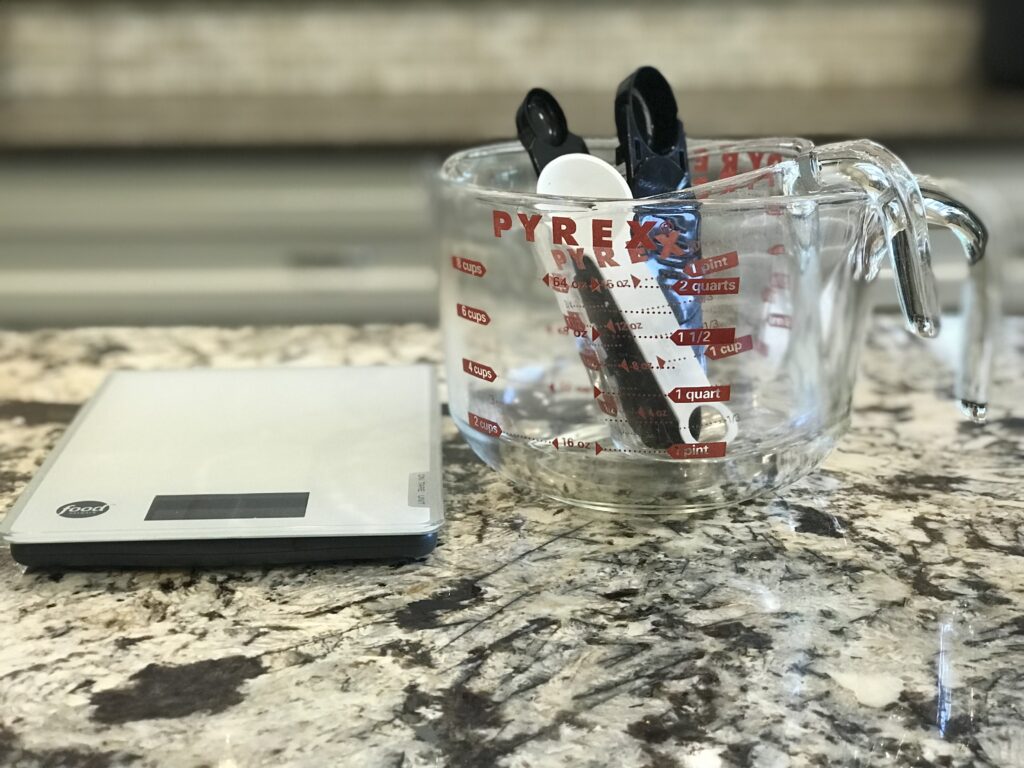
Once I began practicing the habit of tracking my foods, I quickly realized that recording my meals correctly required me to enter the amount of whatever food I was eating. I had to pay attention to not only how many scrambled eggs, but how many cups of steel cut oats did I eat? How many tablespoons of peanut butter was on that slice of bread? How many ounces of chicken was on that salad?
If you’re like me, I didn’t know how much peanut butter I was using until I actually grabbed a tablespoon and measured it. I mean, I knew what a “serving” meant to me, but was it the same as on the product label? I didn’t know, I had to find out. That’s what you’ve gotta do, too. I’m not saying that you have to measure all your foods for the rest of your life, but at least until you get some idea of what each serving size really is. What does 2 Tablespoons of salad dressing look like when its poured on your bowl of mixed greens? How many celery stalks can you eat with 2T of peanut butter? What does a ½ cup of brown rice look like on your plate?
Don’t stop at the tablespoons and measuring cups, either. Another helpful tool for your kitchen is a food scale. How large is a 6 oz steak? How about a 4 oz baked sweet potato? Take a few weeks to get to know what serving sizes actually look like for the foods you eat most often. Once you think you’ve gotten the hang of it, test yourself every now and then: cut what you think is 4 ounces of meat, and then measure it on the scale. How close were you?
Again, this is the sort of habit that takes time, but will be worth it to your wellness journey. And note:kitchen tools are helpful and important. Make sure you invest in some good ones that are convenient and easy to use.
